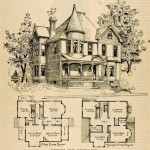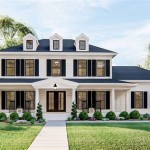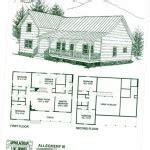Open concept small house plans embody a design philosophy that emphasizes space optimization and seamless flow between living areas. By eliminating unnecessary walls and dividers, these plans create an illusion of spaciousness and foster a sense of interconnectedness within compact homes.
An excellent example of an open concept small house plan is a 600-square-foot layout that features a combined living room, dining area, and kitchen. The absence of walls allows natural light to penetrate the entire space, making it appear larger and brighter. The open design also facilitates effortless movement between different sections, promoting a sense of togetherness among family members.
In the subsequent sections, we will delve deeper into the advantages, challenges, and design strategies associated with open concept small house plans, providing insights to help you determine if this approach aligns with your lifestyle and housing needs.
Open concept small house plans offer several key advantages, including:
- Maximized space
- Improved natural light
- Enhanced sense of togetherness
- Increased flexibility
- Easier entertaining
- Reduced construction costs
- Simplified cleaning
- Better ventilation
- Promoted accessibility
- Improved resale value
However, it’s important to note that open concept small house plans may also present certain challenges:
Maximized space
Open concept small house plans excel at maximizing space by eliminating unnecessary walls and dividers. This creates a more spacious and airy feel, even in compact homes. The open layout allows furniture to be arranged in a flexible manner, maximizing the usable space and creating multiple functional areas within a single room.
For example, in a 600-square-foot open concept small house, the living room, dining area, and kitchen can be combined into one large space. This eliminates the need for separate rooms, which can take up valuable square footage. The open design allows for multiple seating areas in the living room, a dining table that can accommodate guests, and a kitchen with ample storage and counter space. By combining these functions into a single room, the home feels larger and more inviting.
Additionally, open concept small house plans make use of vertical space to maximize storage. Built-in shelves, lofts, and mezzanines can be incorporated into the design to create additional storage space without taking up valuable floor area. This is particularly useful in small homes, where every square foot counts.
Overall, open concept small house plans offer a smart and efficient way to maximize space and create a more spacious and functional living environment.
Improved natural light
Open concept small house plans are designed to maximize natural light, creating a brighter and more inviting living environment. By eliminating walls and dividers, these plans allow natural light to penetrate deep into the home, reducing the need for artificial lighting and creating a sense of spaciousness.
- Larger windows and doors
Open concept small house plans often feature larger windows and doors to capture more natural light. These large glazed openings allow sunlight to flood into the home, illuminating the interior and reducing the reliance on artificial lighting. Additionally, larger windows and doors can provide stunning views of the outdoors, bringing the beauty of nature into the home.
- Fewer obstructions
In traditional house plans, walls and dividers can obstruct the flow of natural light, creating dark and cramped spaces. Open concept small house plans eliminate these obstructions, allowing natural light to reach all corners of the home. This results in a brighter and more inviting living environment that promotes well-being and reduces the need for artificial lighting.
- Reflective surfaces
Open concept small house plans often incorporate reflective surfaces, such as white walls, light-colored furniture, and mirrors, to bounce natural light around the home. These reflective surfaces help to amplify the natural light, making the space feel even brighter and more spacious. By incorporating reflective surfaces into the design, homeowners can maximize the benefits of natural light and create a more inviting and comfortable living environment.
- Skylights and solar tubes
For homes with limited access to natural light from windows and doors, skylights and solar tubes can be used to supplement the natural light. Skylights are installed on the roof to allow natural light to enter from above, while solar tubes are reflective tubes that channel sunlight into the home. These features can significantly brighten up a small home and reduce the need for artificial lighting.
Overall, open concept small house plans are designed to maximize natural light, creating a brighter, more spacious, and more inviting living environment. By incorporating larger windows and doors, eliminating obstructions, using reflective surfaces, and considering skylights and solar tubes, homeowners can enjoy the benefits of natural light throughout their home.
Enhanced sense of togetherness
Shared spaces promote interaction
Open concept small house plans foster a sense of togetherness by creating shared spaces where family members and guests can interact and connect. The elimination of walls and dividers between the living room, dining area, and kitchen encourages communal activities and spontaneous conversations. Family members can cook together in the kitchen while others relax in the living room, or everyone can gather around the dining table for meals and discussions.
Increased visual connections
The open layout of these plans provides increased visual connections between different areas of the home. This allows family members to see and interact with each other even when they are in different parts of the house. For example, a parent working in the kitchen can keep an eye on children playing in the living room, or someone reading in the living room can easily engage in conversations with others in the kitchen or dining area.
Improved communication and relationships
The enhanced sense of togetherness and increased visual connections in open concept small house plans promote better communication and relationships among family members. Spending more time together in shared spaces encourages open communication, strengthens family bonds, and creates a more cohesive household. Studies have shown that families living in open concept homes have improved communication, increased levels of trust, and stronger relationships.
Multi-functional spaces for togetherness
The flexible and multi-functional nature of open concept small house plans allows for various activities to take place simultaneously in the same space. For example, family members can cook, eat, relax, and entertain guests all in one large open area. This shared experience of different activities reinforces the sense of togetherness and creates a more vibrant and engaging living environment.
Overall, open concept small house plans enhance the sense of togetherness by promoting shared spaces, increasing visual connections, improving communication and relationships, and providing multi-functional spaces for togetherness.
Increased flexibility
Adaptable to changing needs
Open concept small house plans offer increased flexibility to adapt to changing needs and lifestyles. The absence of walls and dividers allows for easy reconfiguration of furniture and functional areas, enabling homeowners to customize the space according to their evolving requirements. For example, a growing family can add a crib or play area in the open living space, while empty nesters can convert the same area into a home office or hobby room.
Multi-purpose spaces
The open layout of these plans creates multi-purpose spaces that can accommodate various activities and functions. A dining table can double as a workspace or study area, while a living room can also serve as a guest room or playroom. This flexibility is particularly valuable in small homes, where every square foot needs to be used efficiently. By maximizing the functionality of each space, open concept small house plans provide homeowners with the adaptability they need to meet their changing needs.
Remodeling and expansion made easier
The open concept design simplifies future remodeling and expansion projects. Without load-bearing walls to consider, homeowners have greater freedom to reconfigure the layout, add new rooms, or extend the existing space. This flexibility allows homeowners to adapt their homes to their changing needs without major structural changes, saving time and money in the long run.
Improved accessibility
Open concept small house plans promote accessibility by eliminating physical barriers such as walls and narrow doorways. This makes it easier for individuals with mobility impairments, elderly residents, and young children to move around the home safely and comfortably. By providing a more accessible living environment, these plans enhance the quality of life for all occupants.
Overall, open concept small house plans offer increased flexibility to adapt to changing needs, accommodate multiple functions, simplify remodeling and expansion, and improve accessibility. This flexibility is a key advantage of open concept designs, making them a popular choice for homeowners seeking a versatile and adaptable living space.
Easier entertaining
Ample and open space for guests
Open concept small house plans provide ample and open space for entertaining guests, creating a welcoming and comfortable atmosphere. The absence of walls and dividers allows for easy flow of movement, enabling guests to mingle and interact freely throughout the living area. The open layout eliminates the feeling of confinement and encourages a more social and interactive environment, making it ideal for hosting parties and gatherings.
Multi-functional spaces for various activities
The multi-functional nature of open concept small house plans allows for various activities to take place simultaneously, catering to the diverse interests of guests. The open living area can accommodate multiple seating areas for conversation and relaxation, while the dining table can double as a buffet or serving area. The kitchen, being part of the open space, enables the host to interact with guests while preparing food and drinks, creating a more engaging and inclusive atmosphere.
Improved flow of food and drinks
Open concept small house plans facilitate the seamless flow of food and drinks during parties and gatherings. The direct connection between the kitchen and the living and dining areas allows for easy serving and replenishment, ensuring that guests have access to refreshments without disrupting the social flow. The open layout also eliminates the need for multiple trips to the kitchen, reducing the burden on the host and creating a more relaxed and enjoyable atmosphere for everyone.
Enhanced visual connections for better engagement
The increased visual connections in open concept small house plans promote better engagement among guests. Everyone can easily see and interact with each other, regardless of their location within the open space. This fosters a sense of inclusivity and encourages active participation in conversations and activities, making social gatherings more enjoyable and memorable.
Overall, open concept small house plans make entertaining easier and more enjoyable by providing ample and open space for guests, offering multi-functional spaces for various activities, improving the flow of food and drinks, and enhancing visual connections for better engagement.
Reduced construction costs
Simplified framing
Open concept small house plans require less framing compared to traditional house plans with multiple rooms and walls. The absence of interior walls eliminates the need for additional studs, joists, and other framing materials, reducing the overall cost of construction. This simplified framing also allows for faster construction times, saving on labor costs.
Efficient use of materials
The open layout of these plans promotes efficient use of building materials. By eliminating unnecessary walls and dividers, there is less drywall, paint, and other materials required to finish the interior. Additionally, open concept small house plans often incorporate multi-functional spaces, reducing the need for separate rooms for different activities, which further reduces material costs.
Reduced labor costs
The simplified framing and efficient use of materials in open concept small house plans result in reduced labor costs. With fewer walls to frame and less materials to install, builders can complete the construction process more quickly and efficiently. This reduced labor time translates into significant cost savings for homeowners.
Smaller foundation
Open concept small house plans typically have a smaller footprint compared to traditional house plans with multiple rooms. This reduced square footage results in a smaller foundation, which is a major cost factor in construction. A smaller foundation requires less excavation, concrete, and labor, leading to substantial savings on the overall construction costs.
Overall, open concept small house plans offer reduced construction costs due to simplified framing, efficient use of materials, reduced labor costs, and a smaller foundation. These cost savings make open concept plans an attractive option for homeowners looking to build a budget-friendly and space-efficient home.
Simplified cleaning
Fewer surfaces to clean
Open concept small house plans have fewer surfaces to clean compared to traditional house plans with multiple rooms and walls. The elimination of walls and dividers reduces the amount of floor space, baseboards, and other surfaces that require regular cleaning. This simplified design makes it easier and less time-consuming to maintain a clean and tidy living environment.
Easy access to all areas
The open layout of these plans provides easy access to all areas of the home, making it convenient to clean even the hard-to-reach corners and surfaces. Without walls and dividers obstructing the path, homeowners can easily vacuum, mop, and dust the entire space without having to move furniture or squeeze into tight spaces.
Reduced clutter and dirt accumulation
Open concept small house plans promote a more clutter-free and organized living environment. The absence of walls and dividers encourages homeowners to keep their belongings in designated areas, reducing the accumulation of clutter and dirt. Additionally, the open layout allows for better air circulation, which helps to prevent dust and allergens from accumulating in hidden corners and under furniture.
Multi-functional spaces simplify cleaning
The multi-functional nature of open concept small house plans simplifies cleaning by reducing the number of specialized rooms. For example, a dining table that doubles as a workspace eliminates the need for a separate study or office, reducing the number of surfaces and spaces that require cleaning. This consolidation of functions makes it easier to maintain a clean and organized home.
Overall, open concept small house plans simplify cleaning by reducing the number of surfaces to clean, providing easy access to all areas, reducing clutter and dirt accumulation, and simplifying cleaning through multi-functional spaces. These advantages make open concept plans an attractive option for homeowners seeking a low-maintenance and easy-to-clean living space.
Better ventilation
Open concept small house plans promote better ventilation by eliminating physical barriers and allowing air to circulate more freely throughout the home. The absence of walls and dividers creates a more open and airy living environment, reducing the risk of stale air and improving indoor air quality.
The open layout facilitates cross-ventilation, which occurs when air enters the home from one side and exits from the other. This natural airflow helps to remove pollutants, odors, and excess moisture from the air, creating a healthier and more comfortable living environment. Open concept small house plans often incorporate windows and doors on opposite sides of the home to maximize cross-ventilation and promote a constant flow of fresh air.
In addition to cross-ventilation, open concept small house plans also benefit from stack ventilation. Stack ventilation occurs when warm air rises and exits through higher openings, such as clerestory windows or roof vents, while cooler air is drawn in from lower openings, such as windows or vents near the floor. This natural convection creates a continuous flow of air through the home, further improving ventilation and indoor air quality.
Overall, open concept small house plans promote better ventilation through the elimination of physical barriers, the facilitation of cross-ventilation, and the incorporation of stack ventilation. This improved ventilation creates a healthier and more comfortable living environment by reducing pollutants, odors, and excess moisture from the air.
Promoted accessibility
Open concept small house plans promote accessibility by eliminating physical barriers and creating a more user-friendly environment for individuals with disabilities, elderly residents, and young children.
- Elimination of steps and thresholds
Open concept small house plans often incorporate single-level living, eliminating the need for steps and thresholds that can pose obstacles for individuals with mobility impairments. This allows for seamless movement throughout the home, reducing the risk of falls and accidents.
- Wider doorways and hallways
Open concept small house plans feature wider doorways and hallways to accommodate wheelchairs, walkers, and other mobility aids. These wider openings ensure that individuals with disabilities can easily navigate the home without feeling restricted or confined.
- Accessible bathroom and kitchen design
Bathrooms and kitchens in open concept small house plans are designed with accessibility in mind. Features such as roll-in showers, grab bars, and adjustable countertops allow individuals with disabilities to use these spaces safely and independently.
- Universal design principles
Open concept small house plans often incorporate universal design principles, which aim to create a built environment that is accessible and usable by people of all abilities. This includes features such as lever handles, non-slip flooring, and clear signage, which make the home more user-friendly for everyone.
Overall, open concept small house plans promote accessibility by eliminating physical barriers, incorporating wider openings, designing accessible bathrooms and kitchens, and adhering to universal design principles. This creates a more inclusive and user-friendly living environment for individuals with disabilities, elderly residents, and young children.
Improved resale value
Open concept small house plans offer improved resale value due to their high demand and desirability in the real estate market. Homebuyers are increasingly seeking homes that are spacious, well-lit, and adaptable to their changing needs. Open concept small house plans fulfill these criteria, making them a popular choice among buyers.
- Increased buyer pool
Open concept small house plans appeal to a wider range of buyers, including young couples, families, empty nesters, and individuals with disabilities. The flexible and adaptable nature of these plans allows buyers to customize the space to meet their specific needs and preferences, making them a more attractive option in the eyes of potential buyers.
- Higher perceived value
The spaciousness and openness of open concept small house plans create a perception of greater value in the eyes of buyers. The elimination of walls and dividers makes the home feel larger than its actual square footage, which can be a major selling point for potential buyers looking for a home that feels spacious and inviting.
- Modern and updated design
Open concept small house plans are often perceived as being more modern and updated than traditional house plans with separate rooms. This modern design aesthetic appeals to many buyers, particularly younger generations, who are looking for homes that reflect their contemporary lifestyle and values.
- Easier to stage and market
The open and well-lit nature of open concept small house plans makes them easier to stage and market to potential buyers. The absence of walls and dividers allows for a more cohesive and visually appealing presentation, which can help to showcase the home’s best features and attract more buyers.
Overall, the combination of increased buyer pool, higher perceived value, modern design aesthetic, and easier staging and marketing contributes to the improved resale value of open concept small house plans. These plans are highly sought-after by homebuyers, making them a smart investment for homeowners looking to maximize their return on investment.



/GettyImages-1048928928-5c4a313346e0fb0001c00ff1.jpg)






Related Posts








